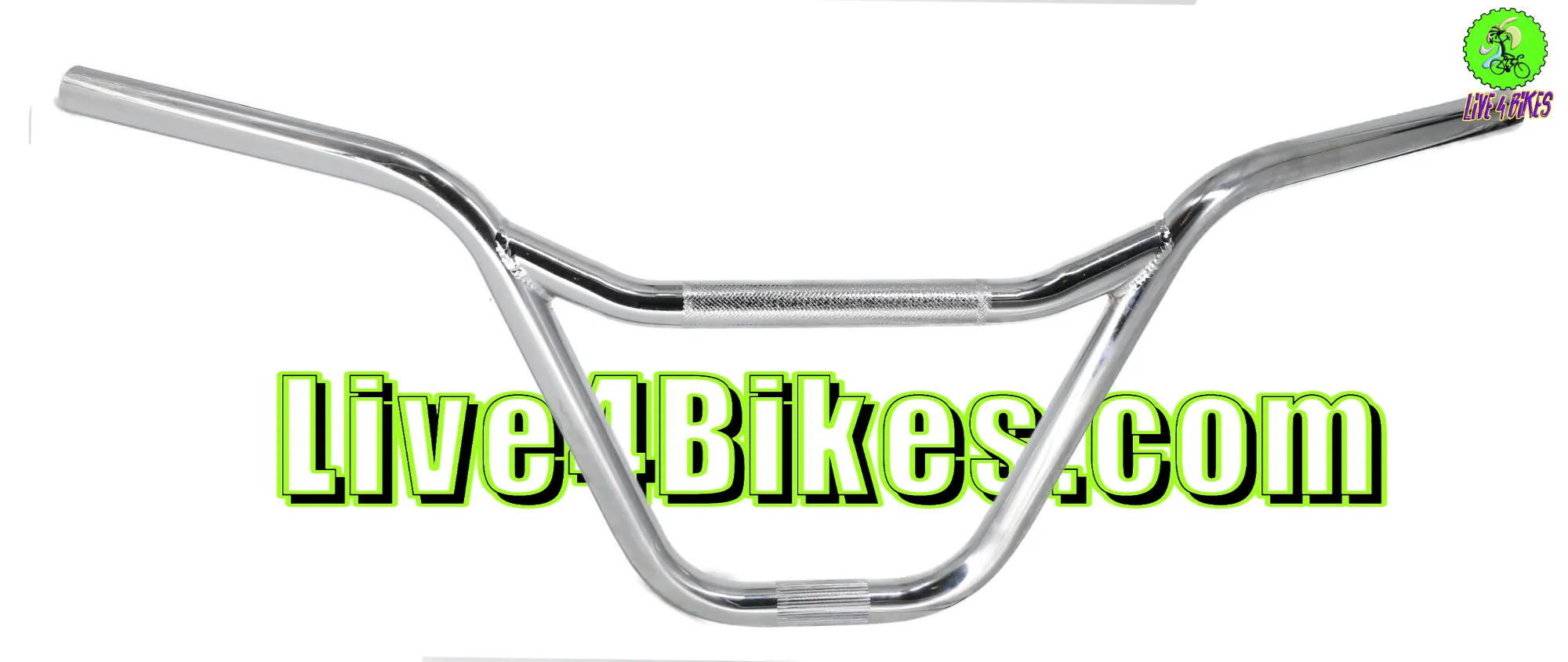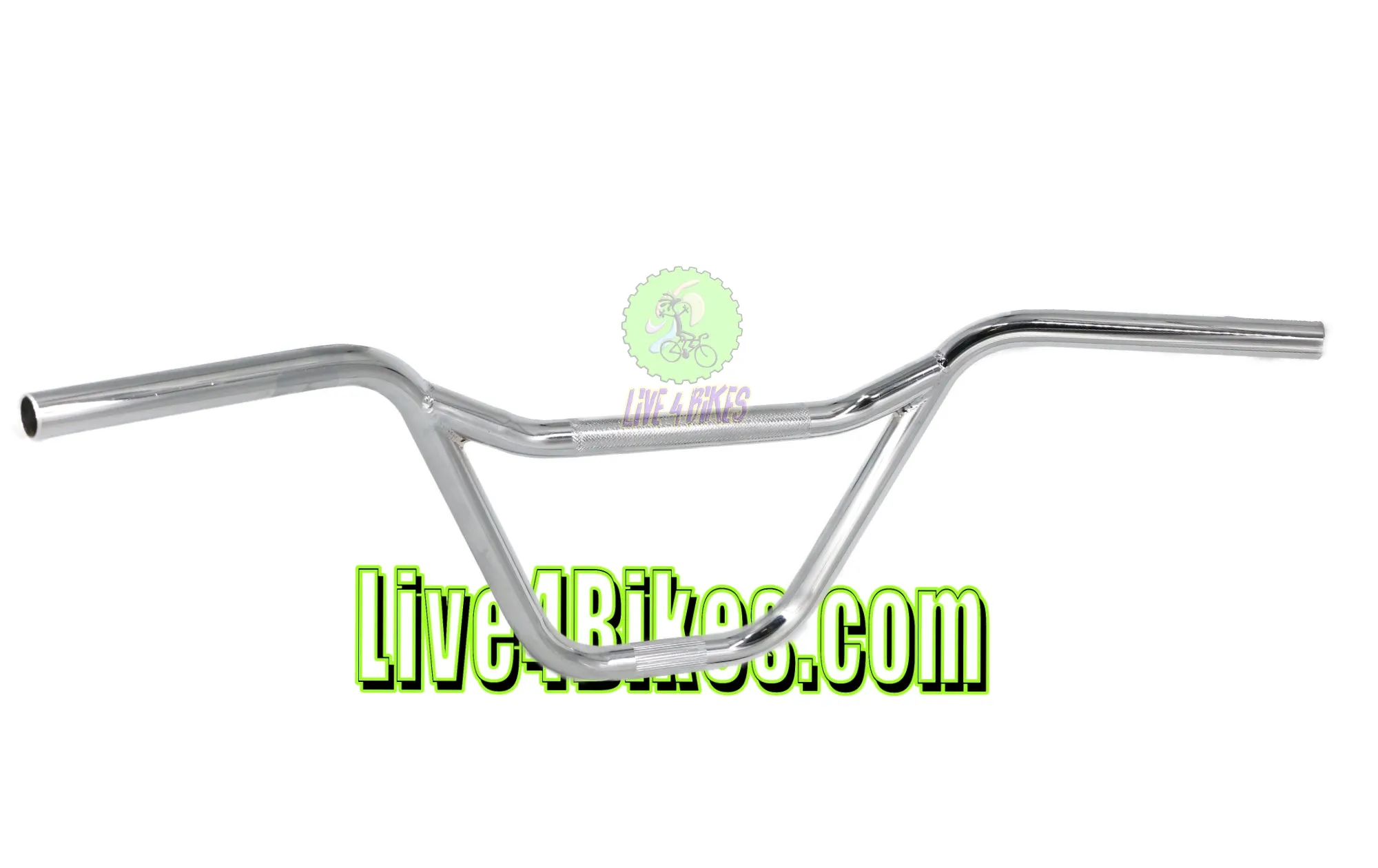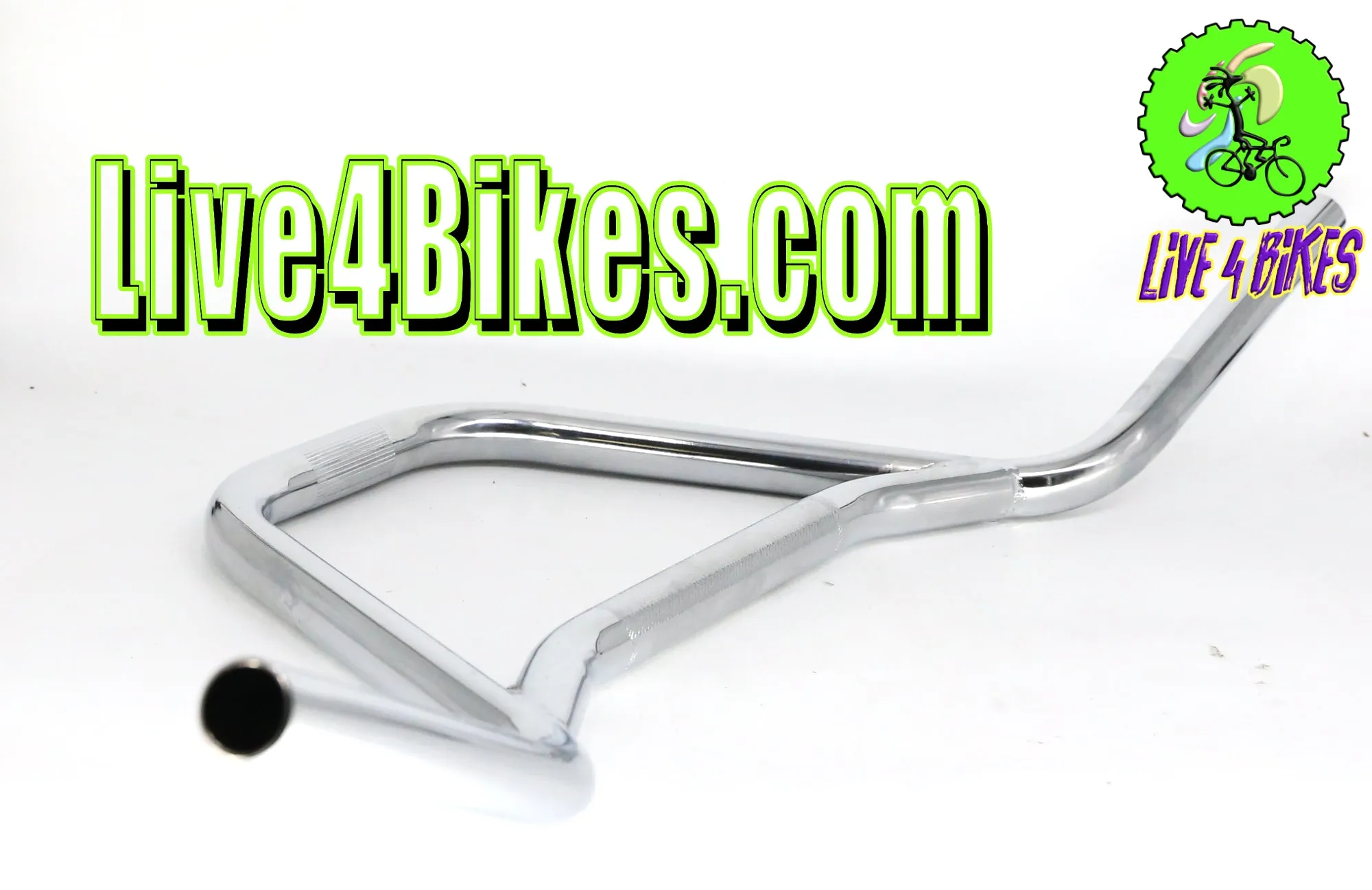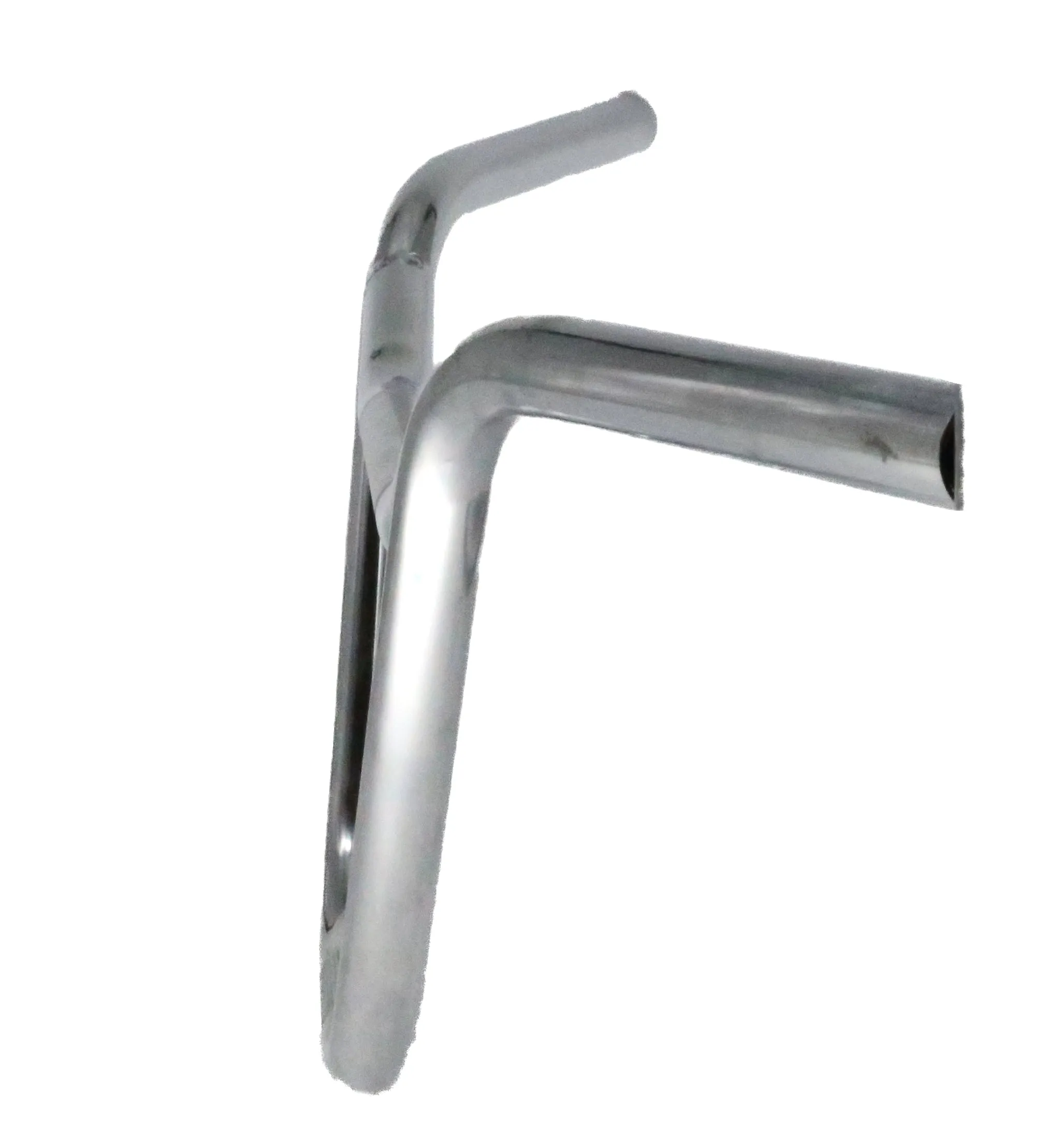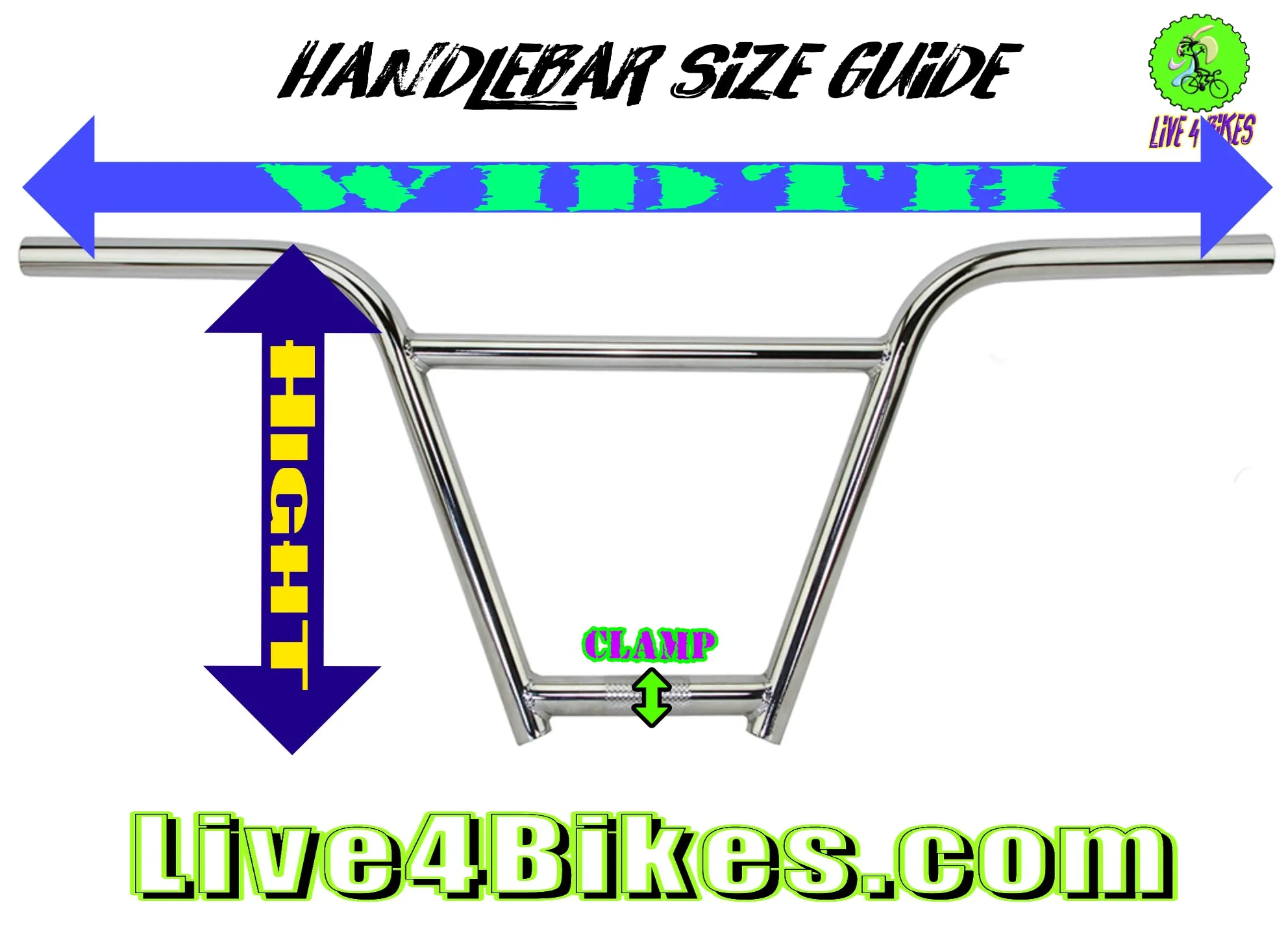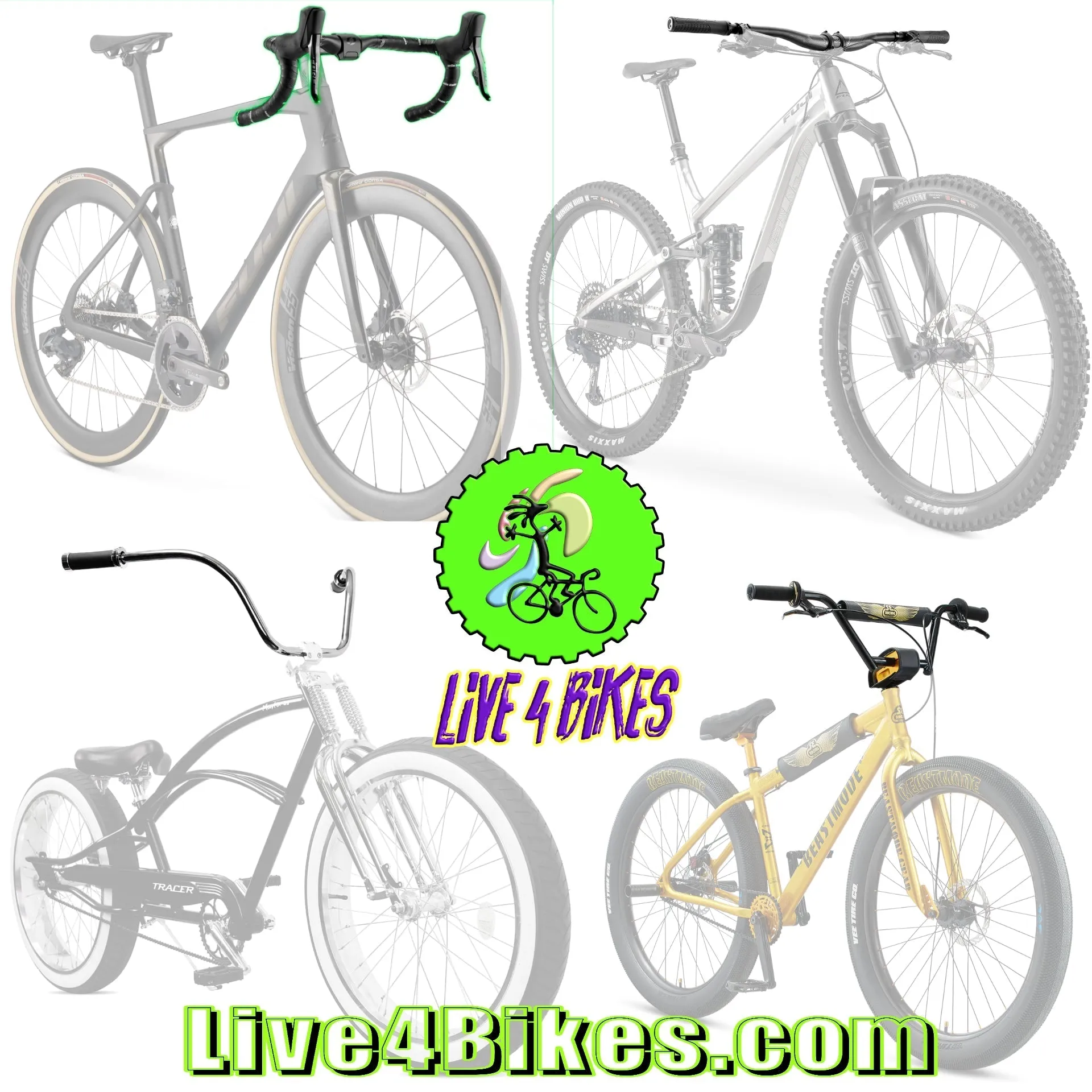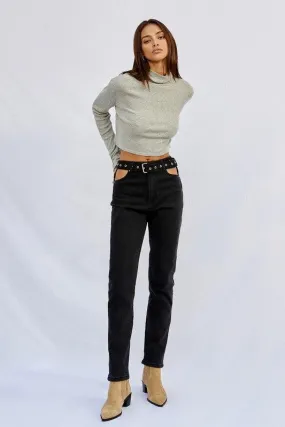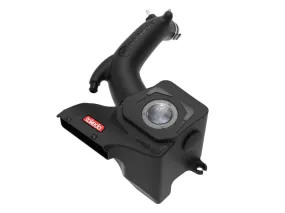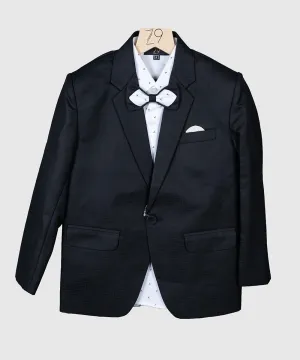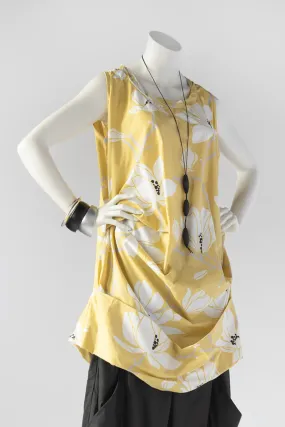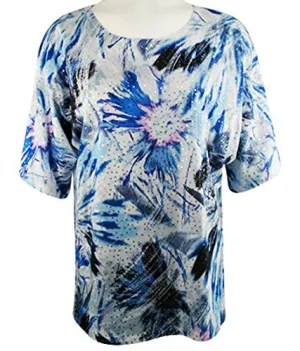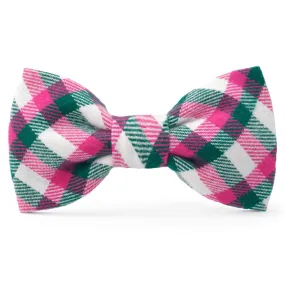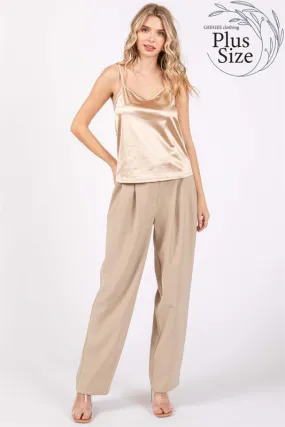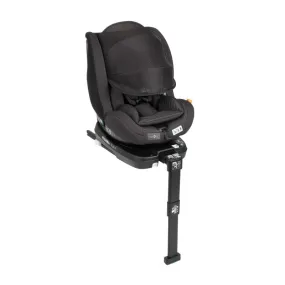Introducing our Steel Chrome 9-inch BMX Handlebars – the epitome of style, strength, and precision engineering for riders who demand the best in their cycling experience. Crafted with the utmost attention to detail, these handlebars are designed to elevate your BMX game to new heights.
Key Features:
-
Durable Steel Construction: Built with high-quality steel, these handlebars ensure durability and longevity, making them a reliable choice for riders who put their equipment through intense tricks and maneuvers.
-
Chrome Finish: The stunning chrome finish not only adds a sleek and stylish look to your BMX bike but also provides an extra layer of protection against corrosion, ensuring these handlebars stay in top condition for the long haul.
-
Optimal 9-inch Rise: Strike the perfect balance between control and comfort with the 9-inch rise, catering to riders who prefer a responsive and versatile handling experience. Whether you're hitting the streets or the skate park, these handlebars are designed to deliver.
-
Precision Engineering: Engineered with precision, these BMX handlebars offer a seamless integration with your bike, providing a responsive feel that enhances your overall riding performance. Every curve and angle is carefully considered to meet the demands of BMX enthusiasts.
-
Universal Fit: With a universal fit, these handlebars are compatible with a wide range of BMX bikes, making them an excellent choice for riders looking to upgrade their current setup or customize their ride.
-
Easy Installation: Designed for hassle-free installation, these handlebars come with everything you need to enhance your BMX experience. Simply follow the straightforward instructions, and you'll be back on your bike in no time.
BMX HANDLEBAR 22.2MM CHROME.
- Clamp Size: 7/8 Inch (22.2mm)
- Width: 28 Inch
- Rise: 9 in
- Material: steel
- Color: Chrome
Beach Cruiser Handlebars
Cruising along the shoreline or exploring your local neighborhood on a beach cruiser is an experience like no other. The right set of Beach Cruiser Handlebars can significantly impact your comfort and control while riding. Before you embark on your journey to upgrade your beach cruiser handlebars, here are three key considerations that will guide you towards making an informed decision about Beach Cruiser Handlebars.
1. Diameter: The Foundation of Stability
The first and foremost factor to consider when choosing beach cruiser handlebars is the diameter. Most Beach Cruiser Handlebars come in 25.4mm in some rare occasions in 31.8mm sizes. And most Vintage beach cruiser in 22.2. The diameter plays a crucial role in determining the compatibility and fit of the handlebars on your beach cruiser bike. It's essential to check your bike's specifications or measure the existing handlebars to ensure a proper match. Generally, beach cruisers handlebars commonly use the 25.4mm diameter, offering a stable and secure grip for a relaxed riding experience.
2. Height: Balancing Comfort and Functionality
The height of your handlebars is a critical aspect that directly affects your riding comfort. For single-speed bikes, the height may be more of a personal preference. However, if you have a bike with gears and hand brakes, the handlebar height is not just a matter of comfort but also functionality. The height is often determined and limited by the length of your cables. Ensure that the handlebar height aligns with your riding style, providing both comfort and easy access to your bike's gears and brakes.
3. Width: Finding the Right Balance
Handlebar width is another crucial consideration that can significantly impact your control and maneuverability. While there are various width options available, it's essential to strike a balance between personal preference and practicality. The width of the beach cruiser handlebars can also be limited by the length of your cables. A wider beach cruiser handlebar offers more control but may be restricted by cable length, especially on bikes with multiple gears and hand brakes. Consider your riding style and the terrain you frequent to determine the optimal width that provides the right balance of control and comfort.
Choosing the right beach cruiser handlebars involves careful consideration of the diameter, height, and width. Ensuring compatibility with your bike's specifications and accommodating the requirements of gears and brakes will lead to an enhanced and enjoyable riding experience. So, before you hit the road on your beach cruiser, take the time to select handlebars that align with your preferences and the demands of your cycling adventures.
.BMX Handlebars
Choosing the Right BMX Handlebars: Key Considerations
When it comes to navigating the ramps and streets on your BMX bike, having the right handlebars is crucial for control and style. Before you dive into the world of BMX handlebars, here are three key considerations to keep in mind to ensure you make an informed choice.
1. Diameter: The Standard for BMX Performance
BMX handlebars typically come in a standard diameter of 22.2mm. This size is widely adopted in the BMX community and offers a perfect balance of strength and weight. It's important to note that this standard diameter ensures compatibility with most BMX stems, making it easier for riders to find suitable replacements or upgrades. Check your bike's specifications or measure the existing handlebars to confirm the 22.2mm diameter.
2. Height: Tailoring Your Ride to Your Preferences
Just like with beach cruiser handlebars, the height of your BMX handlebars plays a crucial role in your riding experience. While personal preference often dictates the height choice, riders should consider factors such as comfort and maneuverability. BMX riders typically prefer lower handlebars for better aerodynamics and control, especially when performing tricks. However, finding the right balance between style and functionality is key to enhancing your overall BMX experience.
3. Width: Precision Control for Tricks and Turns
The width of your BMX handlebars directly influences your control over the bike, particularly when executing tricks and navigating tight turns. Wider handlebars provide more leverage and stability, while narrower handlebars offer increased responsiveness. Consider your riding style and the type of terrain you frequent to determine the optimal width that complements your tricks and turns. Keep in mind that extremes in width may affect your ability to perform certain maneuvers, so finding a balanced width is key.
In conclusion, selecting the right BMX handlebars involves understanding the standard diameter, tailoring the height to your preferences, and finding the optimal width for precision control. Whether you're hitting the ramps or cruising through the streets, choosing the right BMX handlebars enhances not only your bike's performance but also your overall riding experience. Take the time to explore your options and find the perfect set of handlebars that align with your BMX style.
.Road bike handlebar tips
Choosing the Right Road Bike Handlebars: A Comprehensive Guide
The handlebars of a road bike play a crucial role in determining the overall comfort, control, and riding experience. When it comes to selecting the perfect handlebar for your road bike, there are three key factors to consider: diameter, width, and flare. In this article, we'll delve into each of these aspects to help you make an informed decision when purchasing a new handlebar.
Diameter: Finding the Right Fit
The diameter of a road bike handlebar refers to the thickness of the central section where it attaches to the stem. The most common diameter for modern road bikes is 31.8 mm. This size has gained popularity due to its sturdiness and reduced flex, providing riders with better control and stability, especially during high-speed descents or sprints.
However, it's essential to note that older vintage bikes may use a smaller diameter of 25.4 mm. While these handlebars might offer a classic aesthetic, they may exhibit more flex compared to their larger counterparts. When considering a new handlebar, it's crucial to check the specifications of your bike and choose the appropriate diameter to ensure optimal performance.
Width: Tailoring to Your Body
Handlebar width is a matter of personal preference and should be chosen based on your upper body width and riding style. The width of the handlebar affects your body's position on the bike, influencing both comfort and aerodynamics.
As a general guideline, your handlebar width should roughly match the width of your shoulders. This helps maintain a natural and comfortable riding position, reducing strain on your upper body. Experimenting with different widths can help you find the sweet spot that complements your body shape and riding preferences.
Flare: Enhancing Comfort and Control
Handlebar flare refers to the outward angle of the drops – the lower, curved sections of the handlebar. The flare, combined with the width, can significantly impact your riding experience. A slight flare can enhance control and stability, especially when navigating tight turns or rough terrains.
For riders who prioritize comfort over aerodynamics, handlebars with a more pronounced flare can provide a more relaxed hand position. On the other hand, those who prioritize speed and aerodynamics may opt for handlebars with minimal flare.
Materials: Exploring Options for Performance and Comfort
Road bike handlebars are crafted from various materials, each offering a unique blend of performance, weight, and comfort. Common materials include aluminum, carbon fiber, and, to a lesser extent, titanium.
- Aluminum: Known for its durability and affordability, aluminum handlebars are a popular choice among entry-level and mid-range road bikes. While slightly heavier than carbon fiber, they offer excellent strength and stiffness.
- Carbon Fiber: Renowned for its lightweight and vibration-dampening properties, carbon fiber handlebars are a top choice for performance-oriented riders. They provide a comfortable ride and are often found on high-end road bikes.
- Titanium: Although less common, titanium handlebars strike a balance between strength, weight, and comfort. They are prized for their durability and corrosion resistance, making them a premium option for discerning riders.
Conclusion
Selecting the right road bike handlebars involves considering the diameter, width, and flare, all of which contribute to your riding comfort, control, and overall enjoyment. Whether you're a seasoned cyclist or a beginner, understanding these key factors will help you make an informed decision when upgrading or customizing your road bike handlebars.
.Mountain bike / Hybrid Handlebars
Choosing the Right Mountain Bike and Hybrid Handlebars: A Comprehensive Guide
Handlebars are a critical component of any mountain bike or hybrid, influencing control, comfort, and overall riding experience. When selecting the perfect handlebar for your off-road adventures, several key factors come into play. In this guide, we'll explore three essential elements: shape, width, and material.
Shape: Understanding the Basics
The shape of mountain bike and hybrid handlebars can significantly impact your riding style and control on varied terrains. Common shapes include flat, riser, and drop bars.
- Flat Bars: These straight handlebars provide a more upright riding position, ideal for leisurely rides and city commuting. They offer a wide and stable platform, allowing for precise control on technical trails.
- Riser Bars: Featuring a slight upward sweep at the ends, riser bars are popular for mountain biking. They provide a more relaxed riding position, enhancing control and maneuverability in challenging off-road conditions.
- Drop Bars: While less common on mountain bikes, drop bars are often found on certain hybrid models. They offer multiple hand positions for long rides and increased aerodynamics, making them suitable for those who enjoy both road and off-road cycling.
Width: Tailoring to Your Riding Style
Handlebar width is a crucial factor in determining stability and control on the trail. The optimal width depends on your riding preferences and the type of terrain you frequent.
Wider handlebars provide increased leverage and control, making them popular among downhill and enduro riders. However, for cross-country riders who value a more aerodynamic position, narrower handlebars may be preferred.
It's essential to consider your shoulder width and personal comfort when choosing handlebar width. Experimenting with different sizes can help you find the ideal balance between control and maneuverability.
Material: Balancing Strength and Weight
Mountain bike and hybrid handlebars are constructed from various materials, each offering a unique blend of strength, weight, and vibration dampening. Common materials include aluminum, carbon fiber, and steel.
- Aluminum: Lightweight and durable, aluminum handlebars are a popular choice for many riders. They provide excellent strength and stiffness, making them suitable for a variety of off-road disciplines.
- Carbon Fiber: Known for its lightweight properties and vibration absorption, carbon fiber handlebars are favored by riders seeking the utmost performance. They are common on high-end mountain bikes, providing a comfortable ride on rough trails.
- Steel: While less common in modern mountain bikes, steel handlebars are appreciated for their durability and affordability. They may be found on some hybrid models, offering a reliable option for casual riders.
Conclusion
Choosing the right mountain bike or hybrid handlebars involves considering the shape, width, and material, all of which contribute to your control, comfort, and overall enjoyment on the trail. Whether you're tackling technical descents or cruising through city streets, understanding these key factors will guide you in making an informed decision for your off-road adventures.
.



